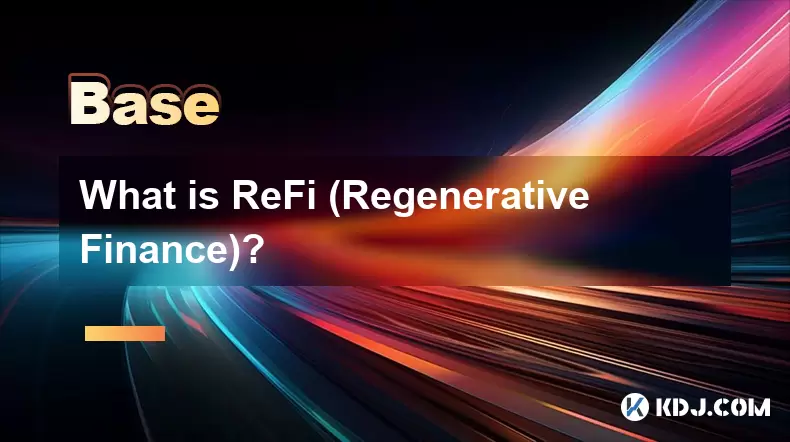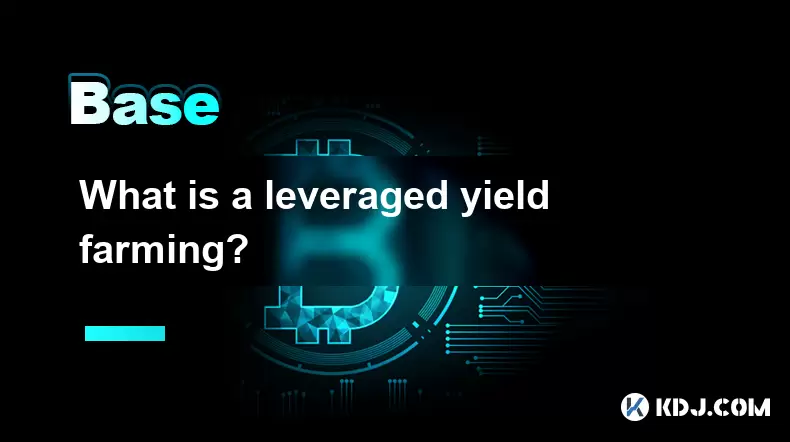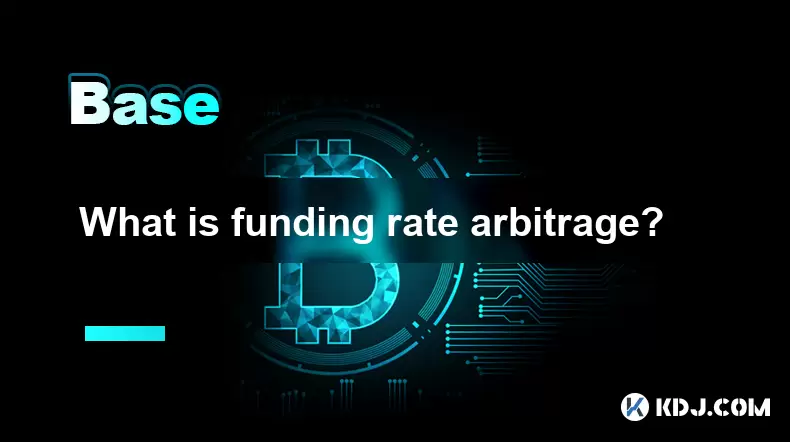-
 Bitcoin
Bitcoin $108,882.1253
-0.18% -
 Ethereum
Ethereum $2,552.5669
-0.81% -
 Tether USDt
Tether USDt $1.0005
0.02% -
 XRP
XRP $2.2403
-2.26% -
 BNB
BNB $660.0215
-0.23% -
 Solana
Solana $150.5827
-1.94% -
 USDC
USDC $1.0000
0.00% -
 TRON
TRON $0.2862
0.88% -
 Dogecoin
Dogecoin $0.1671
-3.38% -
 Cardano
Cardano $0.5826
-3.24% -
 Hyperliquid
Hyperliquid $38.7689
-4.13% -
 Sui
Sui $2.9267
-2.73% -
 Bitcoin Cash
Bitcoin Cash $482.1140
-4.17% -
 Chainlink
Chainlink $13.3784
-3.15% -
 UNUS SED LEO
UNUS SED LEO $9.0410
0.30% -
 Avalanche
Avalanche $18.1461
-3.09% -
 Stellar
Stellar $0.2404
-2.24% -
 Toncoin
Toncoin $2.8244
-2.01% -
 Shiba Inu
Shiba Inu $0.0...01161
-2.32% -
 Litecoin
Litecoin $88.1091
-3.05% -
 Hedera
Hedera $0.1558
-2.72% -
 Monero
Monero $318.0662
-2.09% -
 Polkadot
Polkadot $3.4399
-3.95% -
 Dai
Dai $1.0000
-0.01% -
 Ethena USDe
Ethena USDe $1.0002
0.00% -
 Bitget Token
Bitget Token $4.4678
-2.42% -
 Uniswap
Uniswap $7.3474
-4.23% -
 Pepe
Pepe $0.0...09803
-5.95% -
 Aave
Aave $269.1728
-3.44% -
 Pi
Pi $0.4848
-2.71%
What is ReFi (Regenerative Finance)?
ReFi, or Regenerative Finance, uses blockchain to align economic growth with environmental restoration and social good through transparent, tokenized sustainability efforts.
Jul 04, 2025 at 01:07 pm

Understanding the Concept of ReFi
ReFi, short for Regenerative Finance, is a movement within the cryptocurrency and blockchain ecosystem that aims to align financial systems with environmental and social well-being. Unlike traditional finance models that often prioritize profit over sustainability, ReFi seeks to create economic value while restoring natural ecosystems and supporting communities. It leverages decentralized technologies such as blockchain to incentivize regenerative practices, carbon offsetting, and sustainable development.
At its core, ReFi integrates principles from ecological economics and impact investing into the digital asset space. This means projects under the ReFi umbrella typically focus on measurable outcomes like carbon sequestration, biodiversity restoration, or community empowerment. The key difference lies in how value is created and distributed—ReFi emphasizes long-term planetary health alongside financial returns.
The Role of Blockchain in ReFi
Blockchain technology plays a foundational role in enabling ReFi initiatives. By offering transparent, immutable, and decentralized record-keeping, blockchain allows for trustless collaboration between stakeholders. Smart contracts are used to automate rewards for verified ecological contributions, ensuring accountability without relying on centralized authorities.
For instance, a project might tokenize carbon credits or regenerative agriculture outputs using NFTs (Non-Fungible Tokens). These tokens can then be traded or staked within DeFi protocols to generate yield. This creates an economic incentive for participants to engage in environmentally beneficial activities, while also allowing for liquidity and capital efficiency.
Moreover, blockchain enables real-time tracking of environmental impact through oracles and IoT devices. This ensures that claims about carbon offsets or land regeneration are backed by verifiable data, increasing transparency and reducing greenwashing risks.
Examples of ReFi Projects and Use Cases
Several pioneering projects have emerged under the ReFi banner, each focusing on different aspects of sustainability:
KlimaDAO: A decentralized autonomous organization focused on accelerating carbon market adoption through tokenized assets. Its native token, KLIMA, is backed by carbon offsets stored in a treasury, creating a deflationary mechanism tied to environmental impact.
Moss.Earth: This platform allows individuals and corporations to purchase carbon credits in crypto, which are then retired to offset emissions. Moss uses NFTs to represent these credits, providing proof of ownership and retirement on the blockchain.
Upala: A reputation protocol designed for climate action. It issues badges based on verified behaviors like planting trees or reducing plastic use, which can be used across Web3 platforms to unlock benefits or governance rights.
These examples illustrate how ReFi projects combine financial innovation with ecological responsibility, offering users tangible ways to contribute to global sustainability goals.
How to Participate in ReFi Ecosystems
Participating in ReFi initiatives involves several steps, depending on your level of involvement and technical familiarity:
Research and Identify Projects: Start by exploring active ReFi protocols and their missions. Look for those with clear impact metrics, transparent governance, and strong community engagement.
Acquire Relevant Tokens: Many ReFi platforms issue governance or utility tokens. You may need to buy these via decentralized exchanges or participate in airdrops. Ensure you store them securely in a compatible wallet like MetaMask or Trust Wallet.
Engage in Staking or Yield Farming: Some ReFi projects allow token holders to stake or farm yields while contributing to the protocol’s mission. Always assess risk factors before locking up funds.
Contribute to Regenerative Activities: Some platforms enable direct participation in ecological projects. This could include purchasing and retiring carbon credits or participating in regenerative farming DAOs.
Each step requires careful due diligence, especially given the evolving nature of this niche within crypto. It's important to verify claims independently and understand the underlying mechanisms.
Challenges Facing ReFi Adoption
Despite its promising vision, ReFi faces several challenges that hinder widespread adoption:
Scalability Issues: Many ReFi protocols are still in early stages and lack the infrastructure needed to scale globally. The reliance on Ethereum or other high-gas networks can make participation costly for smaller actors.
Verification Difficulties: While blockchain offers transparency, verifying real-world impact remains complex. There is a need for standardized methodologies and trusted third-party audits to ensure credibility.
Regulatory Uncertainty: As with many DeFi and crypto initiatives, ReFi operates in a gray area regarding legal frameworks. Governments may impose restrictions on tokenized carbon markets or environmental DAOs.
Community Coordination: Since ReFi relies heavily on collective action, achieving consensus among diverse stakeholders can be slow and contentious. Effective governance models are essential to maintain alignment with regenerative goals.
Overcoming these barriers will require collaboration between developers, ecologists, policymakers, and investors. Until then, ReFi remains a niche but rapidly growing segment of the broader crypto landscape.
Frequently Asked Questions (FAQ)
What distinguishes ReFi from ESG investing?
While both aim to integrate sustainability into finance, ReFi focuses on direct ecological regeneration through decentralized systems, whereas ESG (Environmental, Social, Governance) investing is a broader framework applied within traditional finance.
Can I lose money participating in ReFi projects?
Yes, like any investment in crypto or DeFi, ReFi carries financial risks including volatility, smart contract failures, and regulatory changes. Always conduct thorough research before participating.
Are ReFi tokens considered securities?
This depends on jurisdiction and specific token mechanics. Some ReFi tokens may be classified as securities if they offer profit-sharing or voting rights, which could trigger compliance requirements.
How do ReFi projects measure their impact?
Most rely on third-party certifications, satellite imaging, sensor data, and audit reports to quantify environmental benefits like carbon removal or soil restoration.
Disclaimer:info@kdj.com
The information provided is not trading advice. kdj.com does not assume any responsibility for any investments made based on the information provided in this article. Cryptocurrencies are highly volatile and it is highly recommended that you invest with caution after thorough research!
If you believe that the content used on this website infringes your copyright, please contact us immediately (info@kdj.com) and we will delete it promptly.
- Bitcoin's Pattern Break: Are HODLers the Key to the Next Surge?
- 2025-07-04 18:50:12
- Bitcoin Price, Trump's Bill, and the $150K Dream: A NYC Take
- 2025-07-04 19:50:12
- Ethereum, LILPEPE, and the July Bounce: Will Pepe Steal ETH's Thunder?
- 2025-07-04 19:10:12
- Binance Institutional Loans: Unlocking 4x Leverage and Zero Interest for Whales
- 2025-07-04 19:15:12
- Bitcoin Bull Run: Analysts Eye Peak in Late 2025?
- 2025-07-04 19:20:13
- Pepe Indicators, Bullish Forecast: Can the Meme Coin Rally?
- 2025-07-04 19:25:12
Related knowledge

What is a user-generated content (UGC) NFT platform?
Jul 04,2025 at 01:49pm
Understanding the Concept of a UGC NFT PlatformA user-generated content (UGC) NFT platform is a digital marketplace or ecosystem where users can create, mint, and trade non-fungible tokens (NFTs) that represent ownership of original digital content they produce. Unlike traditional NFT platforms where creators often include professional artists or develo...

What is a token generation event (TGE)?
Jul 04,2025 at 07:14am
Understanding the Basics of a Token Generation Event (TGE)A Token Generation Event (TGE) refers to the process through which a blockchain project creates and distributes its native tokens to investors, participants, or stakeholders. This event is often associated with new cryptocurrency projects launching on platforms like Ethereum, Binance Smart Chain,...

What is a block explorer API?
Jul 04,2025 at 05:07am
Understanding the Role of a Block Explorer APIA block explorer API is a crucial interface that enables developers and users to interact programmatically with blockchain data. Unlike traditional APIs used in web services, a block explorer API specifically provides access to blockchain-related information such as transaction details, wallet balances, bloc...

What is a leveraged yield farming?
Jul 04,2025 at 09:36am
Understanding Leveraged Yield FarmingLeveraged yield farming is a more advanced form of yield farming, which itself is a popular method in the decentralized finance (DeFi) ecosystem to earn returns by providing liquidity to various protocols. In traditional yield farming, users deposit tokens into a DeFi platform and earn rewards in return, often in the...

What is open interest in derivatives?
Jul 03,2025 at 02:49pm
Understanding Open Interest in DerivativesOpen interest is a critical metric used in the cryptocurrency derivatives market, particularly when analyzing futures and options contracts. It represents the total number of outstanding contracts that have not been settled or closed by either party involved. Unlike trading volume, which counts all trades made i...

What is funding rate arbitrage?
Jul 04,2025 at 11:43am
Understanding Funding Rate Arbitrage in the Cryptocurrency MarketFunding rate arbitrage is a trading strategy employed by crypto traders to exploit differences in funding rates across various perpetual futures exchanges. In perpetual contracts, funding rates are periodic payments made between long and short traders depending on whether the price of the ...

What is a user-generated content (UGC) NFT platform?
Jul 04,2025 at 01:49pm
Understanding the Concept of a UGC NFT PlatformA user-generated content (UGC) NFT platform is a digital marketplace or ecosystem where users can create, mint, and trade non-fungible tokens (NFTs) that represent ownership of original digital content they produce. Unlike traditional NFT platforms where creators often include professional artists or develo...

What is a token generation event (TGE)?
Jul 04,2025 at 07:14am
Understanding the Basics of a Token Generation Event (TGE)A Token Generation Event (TGE) refers to the process through which a blockchain project creates and distributes its native tokens to investors, participants, or stakeholders. This event is often associated with new cryptocurrency projects launching on platforms like Ethereum, Binance Smart Chain,...

What is a block explorer API?
Jul 04,2025 at 05:07am
Understanding the Role of a Block Explorer APIA block explorer API is a crucial interface that enables developers and users to interact programmatically with blockchain data. Unlike traditional APIs used in web services, a block explorer API specifically provides access to blockchain-related information such as transaction details, wallet balances, bloc...

What is a leveraged yield farming?
Jul 04,2025 at 09:36am
Understanding Leveraged Yield FarmingLeveraged yield farming is a more advanced form of yield farming, which itself is a popular method in the decentralized finance (DeFi) ecosystem to earn returns by providing liquidity to various protocols. In traditional yield farming, users deposit tokens into a DeFi platform and earn rewards in return, often in the...

What is open interest in derivatives?
Jul 03,2025 at 02:49pm
Understanding Open Interest in DerivativesOpen interest is a critical metric used in the cryptocurrency derivatives market, particularly when analyzing futures and options contracts. It represents the total number of outstanding contracts that have not been settled or closed by either party involved. Unlike trading volume, which counts all trades made i...

What is funding rate arbitrage?
Jul 04,2025 at 11:43am
Understanding Funding Rate Arbitrage in the Cryptocurrency MarketFunding rate arbitrage is a trading strategy employed by crypto traders to exploit differences in funding rates across various perpetual futures exchanges. In perpetual contracts, funding rates are periodic payments made between long and short traders depending on whether the price of the ...
See all articles

























































































